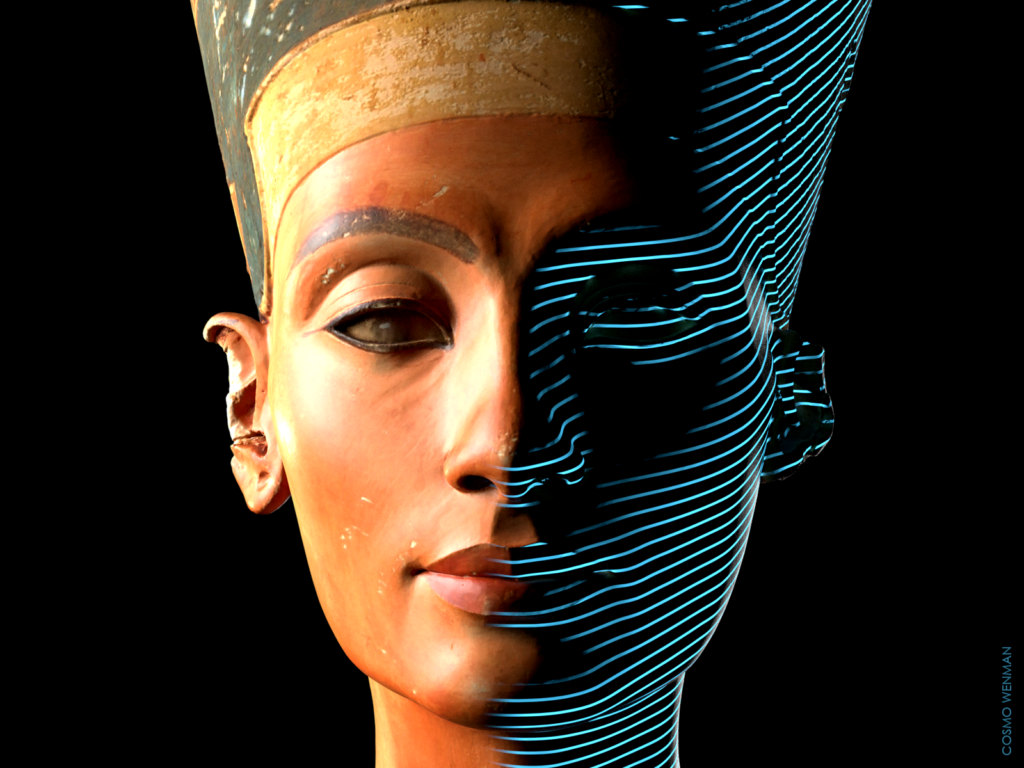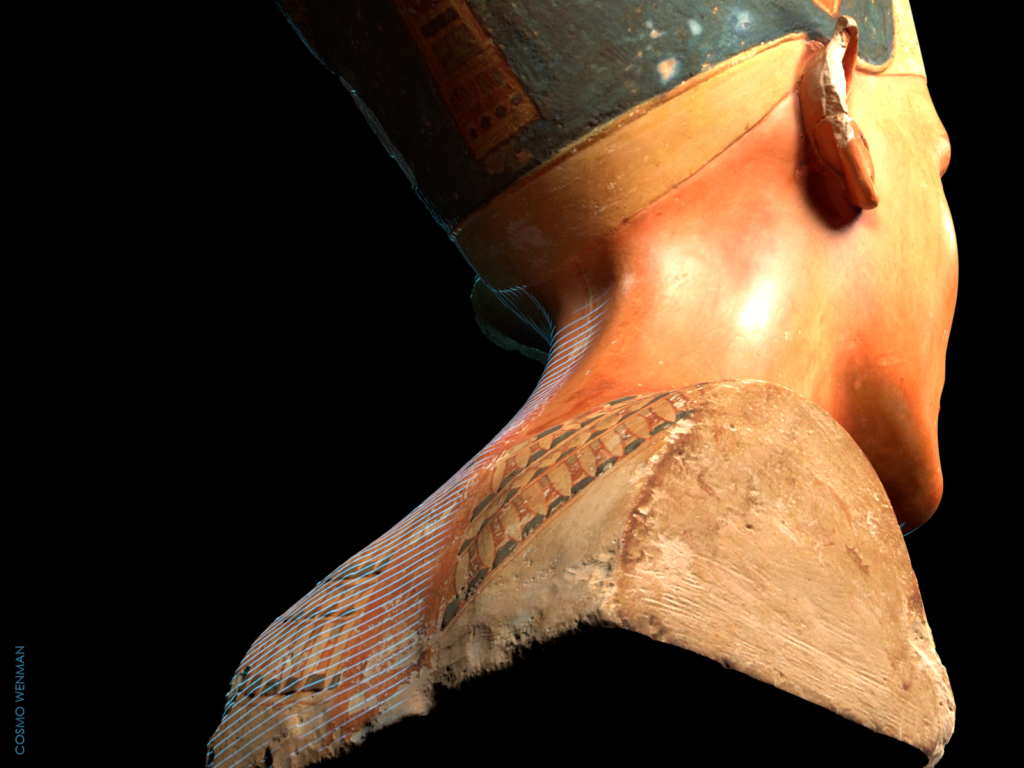Art World
An Artist Has Won a Three-Year Legal Battle to Force a German Museum to Publicly Release Its 3-D Scan of a Bust of Nefertiti
Cosmo Wenman hopes to make museums' 3D scans available to the public.

Cosmo Wenman hopes to make museums' 3D scans available to the public.

Naomi Rea

A tech-savvy artist has emerged victorious in a three-year battle to liberate a magnificent 3D scan of an ancient bust of Nefertiti from a German museum. Now the artist, Cosmo Wenman, is triumphantly making the hard-won data freely available online, and has embarked on a campaign to release 3-D scans and other data stockpiled by museums around the world.
As technology has improved, more museums have begun the long but valuable process of digitizing their collections, including making 3-D scans, which can have important consequences for everything from conservation research to gift shop revenue. While some of those museums, such as the Smithsonian and Denmark’s National Gallery, have readily made their 3-D scans available to the public to view, copy, and remix as they please, Wenman noticed a worrying trend.
Three years ago, Wenman embarked on a freedom of information campaign to force Berlin’s Egyptian Museum to make its 3-D scan of the bust of Nefertiti available to the public, after he found out they were closely guarding the valuable data.
The 3,364-year-old bust has been in the museum’s collection since 1920, after it was discovered by a German team of archaeologists in Amarna, Egypt. (Incidentally, the Egyptian government has been seeking its repatriation ever since it first went on display). When Wenman tried to access the high-quality, full-color 3-D scan of the bust via a freedom of information request, which applies to all state-funded organizations, he was confronted with a series of bizarre hurdles, including being offered a supervised viewing of the scan at the German consulate in Los Angeles, where he is based, as if the data were some kind of state secret.
“It’s very difficult to find anyone who is able to actually articulate a coherent reason for keeping this kind of data away from the public,” Wenman tells Artnet News. “I believe their policy is informed by fear of loss of control, fear of the unknown, and, worse, a lack of imagination.”
Eventually, after three years of doggedly pursuing the museum, Wenman managed, with the help of a lawyer, to dismantle all the museum’s various excuses for keeping the data out of the public view, and is now spearheading his own project to make that data accessible to the public online.

Nefertiti scan rendering by Cosmo Wenman. Courtesy of Cosmo Wenman.
“My access projects are themselves works of art,” Wenman explains. “They are my way of making a mark on the arts. With 3-D scans, the world’s cultural heritage can be digitized and run wild in new, unpredictable ways. Once set free, this data will be copied, transformed, and reverberate in the arts for thousands of years. I’m playing a part in making that happen.”
The possibilities of how the scans might be used are open-ended. Some potential uses of the data include making accurate replicas or augmented reality versions of the works, and some have floated the idea that 3-D scans could have a role in the debate surrounding the restitution of colonial-era artifacts. “I doubt that 3-D scans would be a satisfactory substitute for the actual return of contested works,” Wenman says. “But free, unrestricted access to 3-D scans would at least help scholars and the art-loving public interact with contested works in new and meaningful ways, even if actual repatriation remains unresolved.”
But the Egyptian Museum is not the only museum that has been hoarding the results of its high-tech projects. The Louvre has scans of the Nike of Samothrace and the Venus de Milo. The Galleria dell’Accademia in Florence has worked on Michelangelo’s David, and the Met in New York has scans of numerous masterpieces.
Next up, Wenman has his sights set on the Rodin Museum. Earlier in the year, the French government’s freedom of information agency sided with Wenman in the opinion that the museum is required by law to make its 3-D scans available to the public, but it is not going down without a fight. He plans to take the museum to court, and a victory could have wider consequences for the 3-D scans of works in all the French national collections.
“By year’s end I will bring Musée Rodin to court in Paris to have that opinion enforced,” Wenman says. “They are putting up a fight, but I expect to win.”